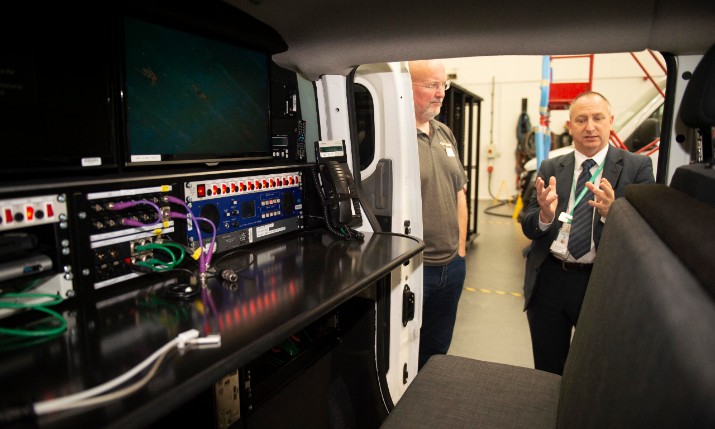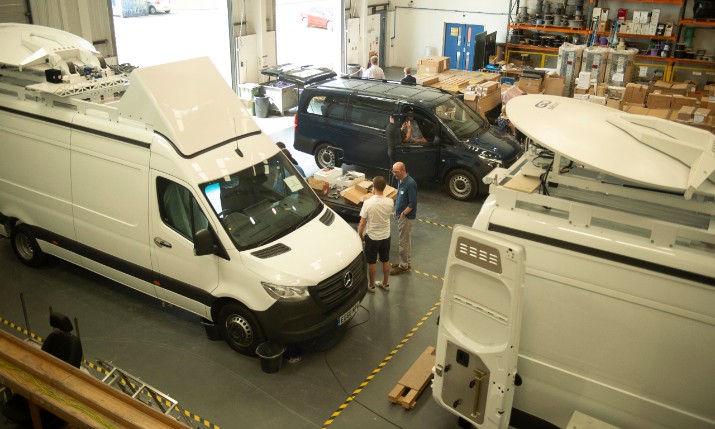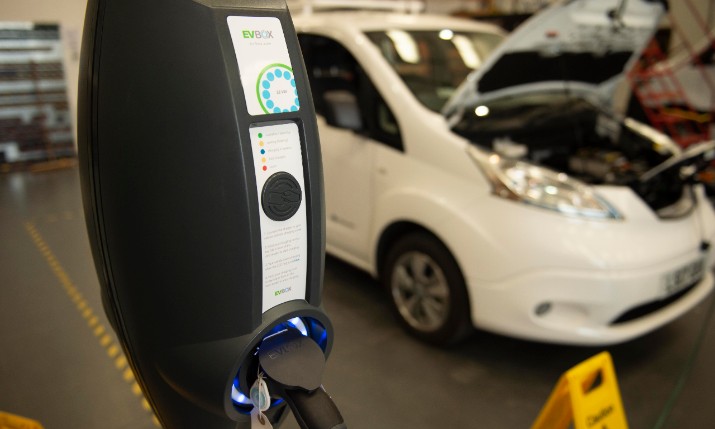Greener mobile broadcasting underpins Megahertz electric vehicle open day

Reducing the UK’s carbon emissions to net zero by 2050 is the target that has been set by a June 2019 amendment to the Climate Change Act 2008.
If that is achieved, this could effectively end the UK’s contribution to climate change, according to Tom Lusher, an analyst at Cornwall Insight, speaking at the Megahertz Open Day in Ely on 25 July 2019.
In addition, with the London Ultra-Low Emission Zone (ULEZ) set to expand in 2021, the pressure is mounting on broadcasters to either plan for EVs or face higher charges.
Greener newsgathering plays an essential role in meeting both these targets, which is why the Megahertz event focused on providing visitors with invaluable insights into the hottest trends driving environmentally conscious mobile broadcasting.
“There are still some specific hurdles to overcome, for example, there is a need to increase the supply of battery packs and vehicles to markets. It is also likely that there will be more government intervention in the market as they look to create an accessible, interoperable and affordable EV market.”
Attendees from the BBC, CNN, AP and the local community group ‘Eco Ely’ came together at the Megahertz factory and headquarters to exchange information and get hands-on with eco-friendly vehicles.
The event, co-sponsored by Mercedes, introduced recent green news production concepts to the broadcast space whilst introducing the very latest electric vehicles (EV) available on the market and their related new in-vehicle technology.
It also provided an in-depth look into Megahertz’s systems integration services in relation to the creation of the world’s first all-electric newsgathering vehicle, which was carefully designed to power everything without touching the 400V traction power system due to the manufacturer’s strict instructions.
Megahertz developed a unique way of intercepting the charger socket, which negotiates with the power source and distributes the charging between the technical power and the traction power.
This allows the operator to determine the priorities at any time and to tap into the vehicle’s auxiliary 12V feed – which normally powers systems such as the windscreen wipers and radio – to get that extra time to just complete an edit or send a package.
Time to go electric
 “If you use vehicles for newsgathering, sending/receiving media, streaming, surveillance, CCTV, or have any other on-board power requirements, now is the time to go electric,” said John Flay, managing director of Megahertz.
“If you use vehicles for newsgathering, sending/receiving media, streaming, surveillance, CCTV, or have any other on-board power requirements, now is the time to go electric,” said John Flay, managing director of Megahertz.
“As of today, there are only a handful of manufacturers and vehicle models available in the EV space, and they are mostly cars. That is why we gathered these speakers to help broadcasters understand upcoming commercial applications: what is going to happen and when, the state of the market, legislation and challenges faced by the EV market.”
The opportunity to examine the first all-electric newsgathering vehicle, the ev-SAT (pictured, left), more closely at the event was welcomed by visitors.
The ev-SAT concept vehicle is built on a Nissan e-NV200 electric van and is in use with BBC News in London. ev-SAT contains the same standard equipment as diesel-powered units, Aluminium racks and fittings are used wherever possible to reduce weight, and cable runs have been carefully optimised.
Lithium batteries are used for technical power, as they provide a considerable saving in terms of size and weight.
While the concept vehicle is built on a Nissan e-NV200 chassis, the design is such that it can be adapted to other, potentially slightly larger vehicles as they become available in pure plug-in electric form.
Successful transition to e-mobility
Speaking at the event, Cornwall Insight analyst Tom Lusher highlighted that the wider EV space is interlinked and involves cooperation between players across policy, regulatory, fleet, automotive, energy and charge point spaces. For the transition to e-mobility to be successful, a more holistic approach with greater engagement across the sectors needs to be taken, according to Lusher.
“There are still some specific hurdles to overcome, for example, there is a need to increase the supply of battery packs and vehicles to markets,” he said. “It is also likely that there will be more government intervention in the market as they look to create an accessible, interoperable and affordable EV market.”
Lusher reminded the audience that the London Ultra-Low Emission Zone (ULEZ) – designed to improve air quality in central London and operating 24/7 and charging vehicles that do not meet set emissions requirements for entering the zone – is set to expand from October 2021.
“This means that a larger number of vehicles will be required to become compliant or face a charge for entering the zone,” he said.
“There are several government grants available to assist with purchasing EVs and with charging. For vehicles, there are the plug-in car and van grants. These offer up to £3,500 off the “on the road” price of eligible 100% electric cars, and up to £8,000 off the cost of a new electric van respectively.”
Smart charging for EVs
 Lusher also addressed the current issue of EV charging points, which has proven a barrier to adoption up to this point.
Lusher also addressed the current issue of EV charging points, which has proven a barrier to adoption up to this point.
He reminded the audience that on 18 July, the UK government announced three significant initiatives including the fact that all new rapid and ultra-rapid charge points will provide debit and credit card payments by 2020.
The government also launched a consultation on EV smart charging, which seeks views on ensuring that home charge points are capable of smart charging, are cyber-secure and interoperable. On the same day, another consultation was published, seeking views on changes to the English Building Regulations to ensure that new-build properties that fall under specific criteria have a charge point installed.
“The EV space is innovative, and many trials are taking place,” concluded Lusher. “The work that has been undertaken by Megahertz to create a broadcasting solution that uses an electric van shows that EVs can be adapted to meet the needs of businesses and fleets.”
Article contributed by Megahertz.
